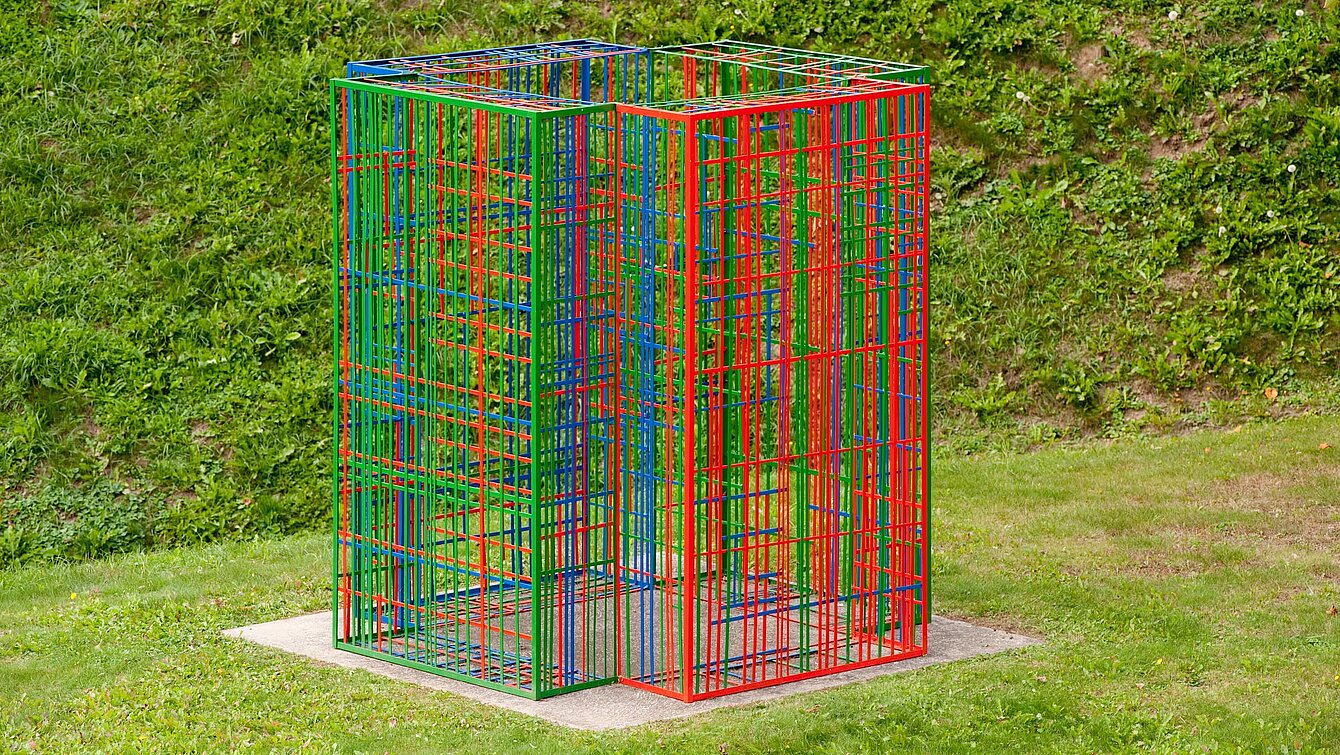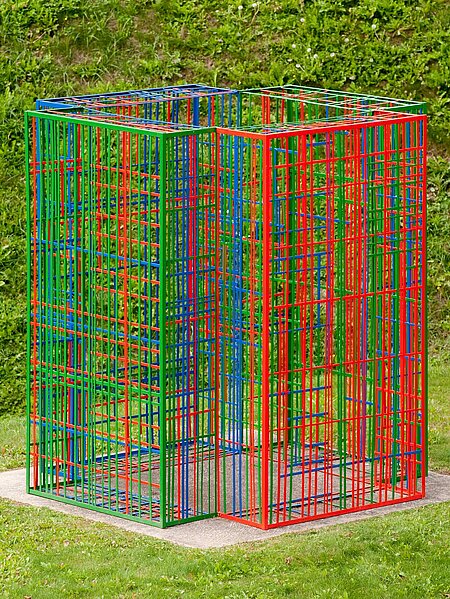Meshes and frameworks of lines are the key motifs in Hörtner’s oeuvre. Here she establishes the structures of space and spatialisation in the form of a sculpture that is both self-contained and constantly shifting and moving as we pass by. The work oscillates between a spatial and planar appearance, so allowing us to observe the creation of space itself. The shift in perception is also conveyed—the four colour modules overlap and interconnect differently each time you look, depending on the angle from which the sculpture is viewed. The work also makes us think of electronic media, which can be used to programme and simulate space.
o.T.
Sabina Hörtner, 1993


Image Credits
Author
Rainer Fuchs
Location on map
Position 28
Owner
Artothek des Bundes
Artist biography
Sabine Hörtner
Show all
About the sculpture
Line meshwork and frames of red, green and blue colour are the basic motifs in Sabina Hörtner’s works. The line is construction element, by means of which literally manifold constellations of shape can be created on the surface and spatially.
The choice of colours is not due to sentimental favourites but oriented by the colours of Edding markers which she most frequently used. Hence Hörtner uses colours that are industrially standardised and produced for profane work processes. She also uses the colours’ optical characteristics: “The fact that three colours occupy three different levels, e.g. blue is more distant than red, is a very useful thing for me.” (Hörtner)
Thus also in the untitled sculpture she bases her approach on the colours’ spatial effect in order to visualise the structures of the space and render something spatial by means of a sculpture. Therefore the coloured sculpture is not only a spatial object but also a structured space turned into shape.
The precise construction of the spatial body conveys the experience of the process character and the change in perception. It is basically four modules, which upon examination will always overlap and network differently, following the movement of the gaze. The gaze swings between surface-related and spatial perception.
One feels reminded equally of sculpture, architecture and painting. At the same time, both structural-conceptual and colourful-painted components determine the impression. In them swinging between spatial and surface-related appearance and the characteristic of making the creation of spatiality itself perceptible, the work refers to the virtual worlds of computer graphics beyond traditional genres.
Also, because it is a technoid construction of modular units, one might think of electronic media, with the help of which space can be programmed and simulated in the surface too.



















